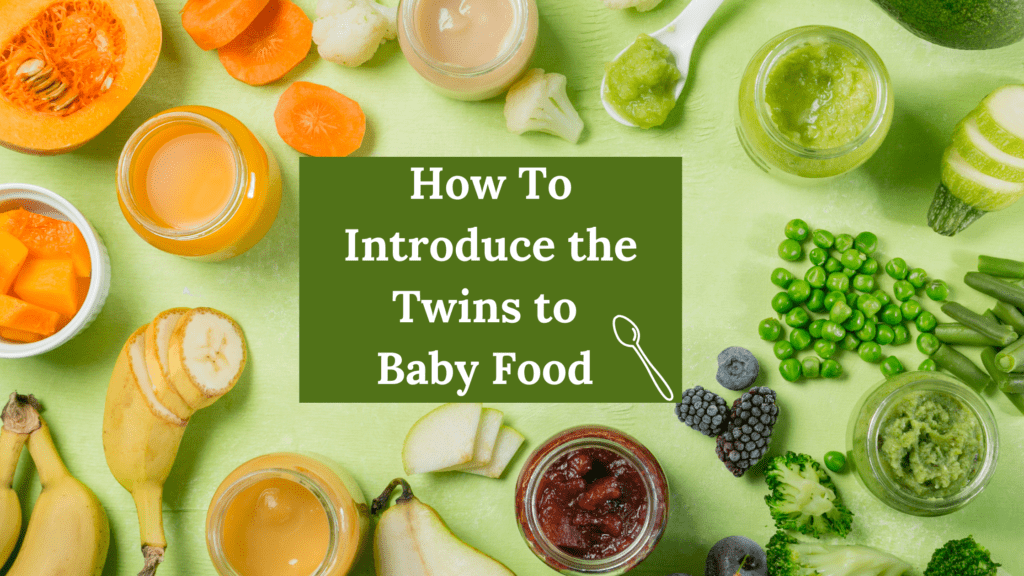Last updated on September 28th, 2021 at 01:26 pm
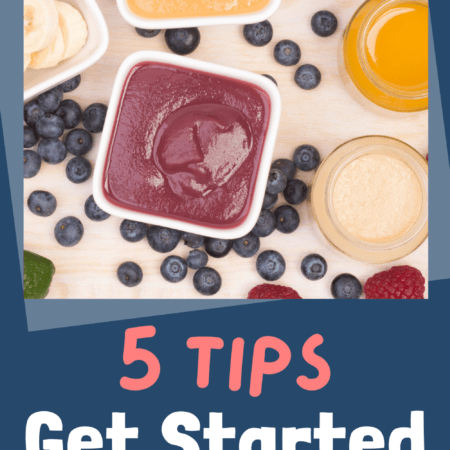
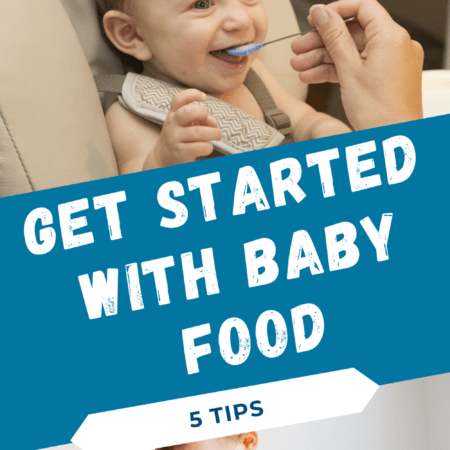
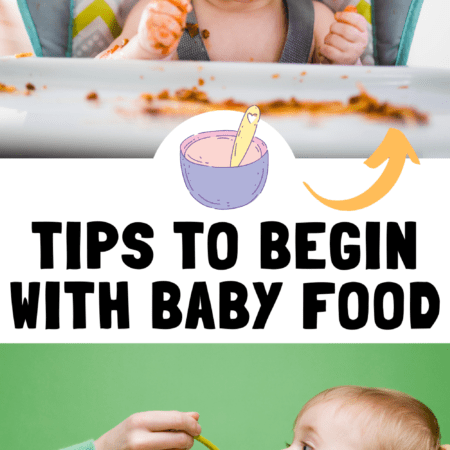
Learn all about where to begin with starting baby food, thanks to our friends at Zoe.
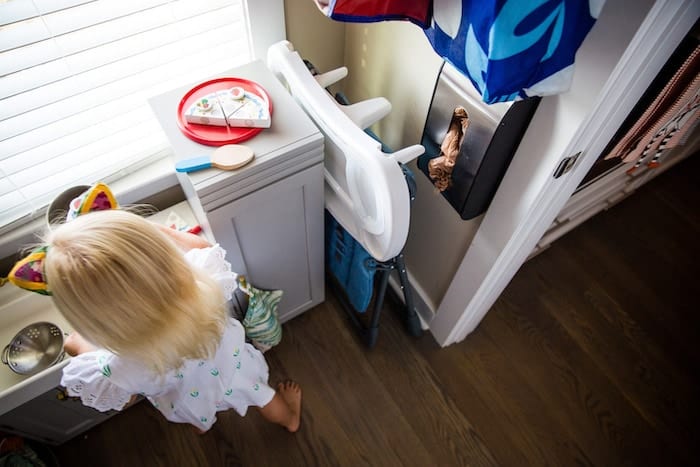
Starting Baby Food: 5 Tips to Begin
As a feeding therapist, I often hear many questions from new parents who are worried about starting baby food with their infants. What should I give them? What is the perfect spoon? How much should I feed them? What if they gag or choke on it? This should be an exciting and fun milestone, so here are five tips for starting baby food with your infants.
1. Proper Positioning Does Matter
It is recommended to start solid food with your baby between 5-6 months of age. During this time, babies are typically fed a bottle in a semi-reclined position in your arms. For their first experience with solids, a semi-reclined position in a high chair is recommended to imitate what your baby is used to. This position is also helpful as it uses a little bit of gravity to help move the food back to swallow.
In the next two months, typically ages 6-9 months, your baby will be ready for a more upright position in that high chair. Be sure they are sitting with good support and that their hips, knees and ankles are well supported and bent at 90 degree angles. (In the therapy world, this is known as 90-90-90 sitting).
Baby-Led Weaning for Multiples
2. Choose the Right Equipment for Starting Baby Food
Now that your baby is positioned well for starting baby food, let’s look at what we will need to get started. The recommended age to start solids is 5-6 months of age. This is a prime time for children to learn and experience these textures in their mouths. If you choose to wait longer to introduce solids, you may experience more difficulty with your child accepting these foods. If your pediatrician has, for any reason, encouraged you to wait to start solids, please follow their instructions.
Most parents choose to start baby food with baby cereals (usually rice cereal) mixed with their baby’s preferred formula or breast milk. This is a perfect food to start with, but if your baby appears to not enjoy this, remember that stage 1 baby purees offer a little bit of flavor that baby may enjoy. Starting with a milder favor like apples, pears, or bananas is a great addition to the cereal mix or can be served by itself. Make sure this mixture is on the thin liquid side to imitate the liquid they are used to getting from a bottle.
As they become more proficient with this, you can begin to slowly thicken this puree mixture to a pudding texture. Be sure you are using an appropriate spoon when you feed your baby. Choose a spoon that has a shallow bowl on the end that is small enough to fit inside your baby’s mouth. The shallow bowl ensures your baby will be successful in learning how to remove food from the spoon.
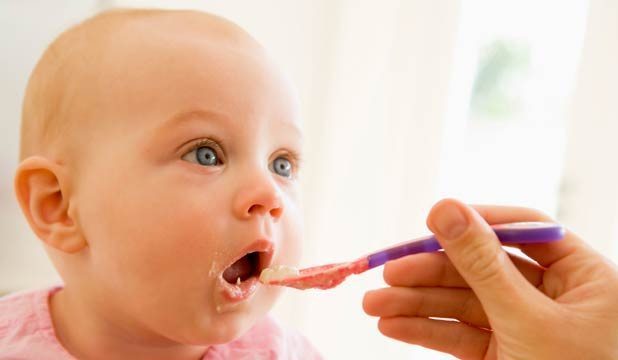
3. Get Messy and Have Fun
Children in the 5-6-month age range are learning about hand to mouth exploration and are more active reaching for toys. Continue to encourage these skills while introducing solid foods! If your baby is interested in reaching for the spoon you are using, give them a spare spoon to play with while seated in the highchair. You can dip their spoon in the food which will encourage that hand to mouth exploration skill and offer a reward in doing so. If you child is curious about what is in the bowl, place some of the food on the tray and encourage them to play in the pureed food. This is great sensory play and encourages more hand to mouth development when starting baby food.
Table For Two: Homemade Baby Food for Twins
4. Tongue Thrusting and Loss of Food is Normal
At this point in development, babies have only learned to suckle from a bottle or breast nipple. As they begin to learn how to manipulate food in their mouth that is not liquid, you may notice they will thrust their tongues out of their mouth frequently and might lose a lot of the food you just fed them. This is normal when starting baby food purees. Babies will take a little bit of time to learn how to correctly hold this food in their mouth and move it to the back of their mouths to swallow. This is another reason positioning in that semi-reclined high chair is helpful; this will help babies be successful with eating while learning to correctly manipulate foods in their mouths.
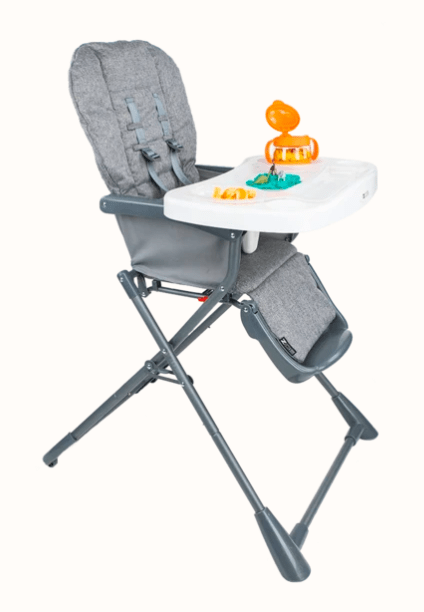
5. Gagging is Normal – Remember to Stay Positive
Some parents may report their baby gags quickly and easily when eating solid foods for the first time. This is normal. Gagging is very different from choking. Gagging is a protective response to make sure a person, or baby’s, airway remains clear during eating. Choking is when food becomes lodged in an airway preventing the person from breathing. Choking is accompanied by individuals turning blue from lack of air and they are unable to cough or talk. If your baby can cough, they are not choking.
Gagging is often seen when starting baby food because. Anatomically, their gag reflex trigger is positioned at the front of their tongue. The gag reflex is usually bypassed by the bottle or breast nipple being positioned at the back of the mouth for feedings. By using a spoon, you are helping to move this reflex trigger to the back of their mouth where it should be.
If your baby does gag, remain calm and gently reassure them they are ok. If needed, you can help them lean forward in case they need to spit or drool the food out of their mouth. Your baby looks to you for comfort, so if you remain calm during their gagging, they too will remain calm and be more likely to try again. One of the hardest things to do, but most beneficial, is to stay calm and positive when things are not going as you have hoped during feeding.
Every milestone should be exciting and fun with your growing baby. These tips should help make starting baby food fun and easy. However, if you should notice that your baby is struggling with meeting this milestone, including excessive gagging, frequent choking, and refusal to eat any foods from a spoon, open a dialogue with your pediatrician about this and consider seeking a referral to an occupational or speech therapist who specializes in feeding.
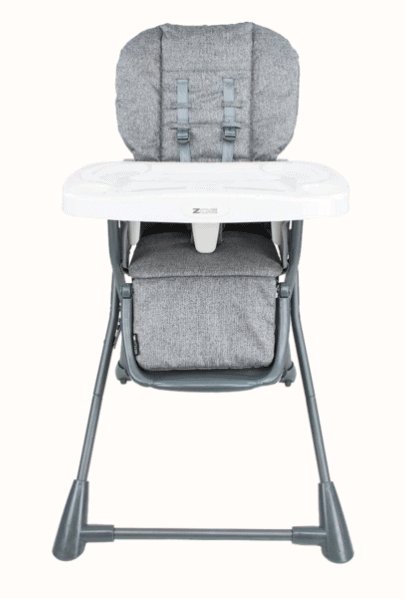
Zoe Fold-Away High Chair features
- DESIGN — Sleek design with moisture wicking lux fabric for handling everyday spills
- COMPACT — Easy fold allows you to store in tight places, behind doors or in a pantry corner
- DISHWASHER — The removable tray is translucent and 100% dishwasher safe
- SAFETY — 5-point harness keeps kiddos safe & secure
- 45 lbs max per seat
- Weighs 13 lbs
- Age recommendation: 3+ months
Welcome to the skinniest fold-away high chair EVER! The Zoe Fold-Away High Chair (retail $125) features the comforts of luxe wipe-able fabric, extra comfy cushion from head-to-toe. It folds flat and tucks away easily to save you space in the kitchen. With a removable tray cover for easy cleaning, mealtime can’t get more convenient. And you get your kitchen back (and when you have twins, space is at a premium!) The Fold-Away High Chair is also super convenient for grandma’s house and road trips.
BOGO COUPON CODE ALERT! Buy one Zoe Fold-Away High Chair and get the SECOND ONE FREE! Yes, that’s TWO high chairs for the price of one! Click here to buy with the code ZOEBOGO (discount automatically applied at checkout with quantity 2 in your cart — while supplies last).
For full details, visit Zoestrollers.com.
Recent Posts
- Best Crib Mattress
- Three Bras You Need After Delivering a Baby
- Everything You Need to Know About Your Mucus Plug
- Sunscreen Hacks for Your Twinnies
- Are Twins Hereditary?
All content on this Web site, including medical opinion and any other health-related information, is for informational purposes only and should not be considered to be a specific diagnosis or treatment plan for any individual situation. Use of this site and the information contained herein does not create a doctor-patient relationship. Always seek the direct advice of your own doctor in connection with any questions or issues you may have regarding your own health or the health of others.

Megan Carpenter has been an occupational therapist for 7 years with 5 years of experience in pediatrics at United Cerebral Palsy of Greater Birmingham. Megan is married and is also a mother of 3 year old twin girls who constantly keep her busy but fill her life with much joy. Both of her girls experienced severe reflux as infants, and as a result, Megan has turned her professional focus to pediatric feeding, eating and swallowing. Megan can be contacted at mcarpenter@ucpbham.com with any questions related to OT. For articles by Megan on Twiniversity, click here.


